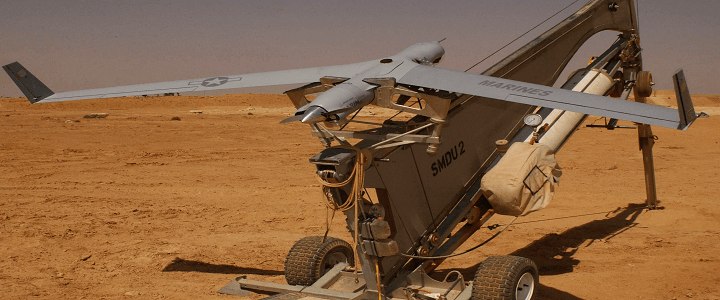The military appears to be spending a great deal of time and money on developing counter-drone systems. All four of the major services (Army, Air Force, Navy and Marines) are testing and/or developing technologies designed to combat enemy drones.
“The Army has deployed counter-drone…technologies and they have been tested and are currently being used in areas of conflict overseas,” Army Spokeswoman Lt. Col. Robin L. Ochoa told ClearanceJobs in an email.
In January, the Army awarded a $108 million contract to defense company SRC for the development of mobile systems that counter small, slow and low-flying drones.
According to SRC’s website, its Silent Archer technology finds and defeats hostile drones. Silent Archer incorporates radar, electronic warfare systems, a camera, and a 3D user display.
The Army is also utilizing counter-drone technology developed by Raytheon. The Army’s Howler system “achieved operational capability” and utilizes Raytheon’s multi-mission simultaneous radar and its Coyote unmanned aircraft system, the company stated in a June press release. The system can be used to track drones of all sizes, Raytheon added.
In less advanced stages of development is Raytheon’s BLADE, which defeats enemy drones with “electronic attack,” multiple media outlets quoted the Army as saying in September. An acronym for “ballistic, low-altitude drone engagement,” BLADE is fired from vehicles and is designed to thwart smaller drones at short range.
In October, Raytheon reported that it had “delivered the first high-energy laser counter-unmanned aerial system to the U.S. Air Force.” The system uses “an electro-optical/infrared sensor, to detect, identify and track rogue drones,” Raytheon stated. According to the company, the Air Force plans to test the system overseas over the next year.
Mobile Weapons: A Strong Defense Against Drones
Meanwhile, the Air Force last month successfully tested Lockheed Martin’s high-energy anti-drone laser system known as Advanced Test High Energy Asset, or ATHENA, in Oklahoma. ATHENA has been tested since at least 2017.
The Marine Corps tested “the first ground-based laser approved” for use by land-based troops, Defense News reported in June. The Marines reportedly said the laser could be used to counter drones. Finally, the Navy is developing multiple weapons that could greatly increase ships’ ability to defend themselves against drones, according to a Congressional research report reprinted by USNI. Among the anti-drone weapons being developed by the Navy are solid state lasers. an electromagnetic railgun , and a gun-launched guided projectile, the report stated. The service has developed these technologies for several years, the report noted.
The importance of the Pentagon’s anti-drone efforts may have increased after a Saudi Arabian oil installation was attacked by drones in September, causing extensive damage. Washington and the Saudis blamed Iran for the attack. Additionally, in August, Iranian forces and their Shiite allies had been planning to attack Israel using drones, the Israeli Defense Forces reported. Israel launched preliminary strikes that prevented Iran from carrying out the attacks, the IDF stated.
In a paper released on September 19, The Heritage Foundation stated that Iran’s drones “pose a growing threat to a broad range of U.S. political, economic, and security interests in the (Middle East).” Moreover, there are “concerns that U.S. forces in the region may not have the necessary capabilities or sufficient numbers of counter-drone systems” to counteract Tehran’s drones, Heritage stated. The organization called on the White House to, among other things, “improve the comprehensiveness” of America’s counter-drone systems and that of its allies.
Former Director of National Intelligence Daniel Coats told Congress in 2019 that Iran’s drones could help it target the U.S. and compromise the Strait of Hormuz. Given that situation, the possibility that Iran may have already used drones against Saudi Arabia and may have been preparing to use them against Israel, and the strained relations between the U.S. and Iran, the Pentagon is likely to continue to prioritize the development of anti-drone technologies going forward.




